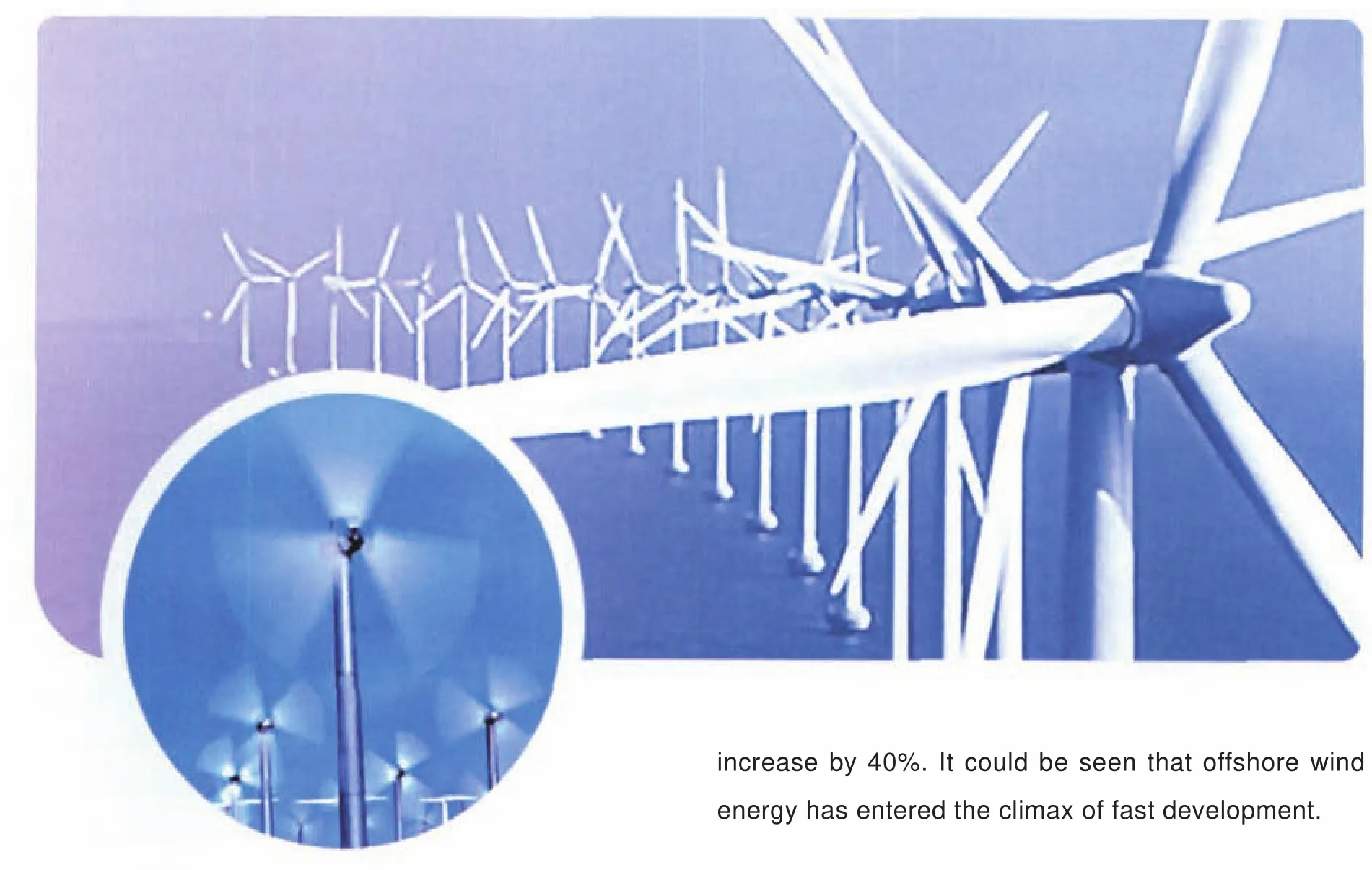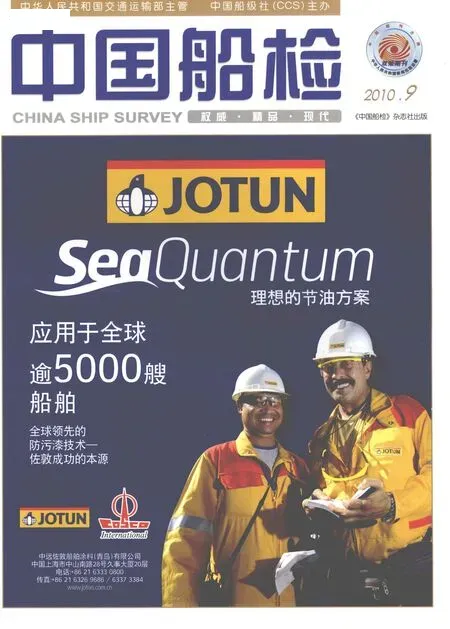The Latest Trend of Technology for Offshore Wind Turbine Units
By Liu Xiaobo

In the year of 2008,the global wind turbine industry experienced a new round of “going offshore”. In 2009,the offshore wind turbine installed capacity in the world reached 689 million KW,an increase of over 100% compared with the same period of last year. According to the forecast of EWEA,by 2030,the percentage of offshore wind turbine installed capacity in the world’s total wind turbine installed capacity will increase by 40%. It could be seen that offshore wind energy has entered the climax of fast development.
Speeding up development towards largescale and deep sea
For the present,the offshore wind turbine units are mainly in the range of 2 MW to 5MW. The next generation of offshore MW grade wind turbine will be ranged between 6MW to10MW. Danish Vestas said that its wind turbine of 6MW will be produced next year. Clipper of the US developed the wind turbine prototype of 10MW in England and planed to install and put on trial at the end of 2011. Meanwhile,bank clearance of the offshore wind turbine units has increased from 250m in 1990 to 30km in 2008,the depth of underwater operation has also increased from 6m to 45m for the Britain Beatrice wind farm in 2007. It can be seen clearly that the offshore wind turbine units are developing towards large-scale and deep sea,and the speed of such development is increasingly faster.
The technology of power adaption for varied feather and speed is the favorite
Since the power adaption for varied feather has the advantage of stable load control,safety and high efficiency,it has been widely used in recent years in large scale wind turbine units. In combination with the application of the technology of varied feather and the development of electronics and electrics technology,most manufacturers of wind turbine units are beginning to use varied speed constant frequency technology,and developed the wind turbine units of varied feather and speed,which has further improved wind energy transformation. In the year of 2006,92% of the wind turbine units installed all over the world have adopted the varied feather and speed,and this percentage is increasing year on year. The MW grade wind turbine units installed in China in 2007 are all units with varied feather and speed.
Direct-drive wind turbine on the rise

With the increasing demand for the reliability of wind turbines,the design of offshore direct-drive wind turbine (with no gearbox) will be on the rise. The directdrive wind turbine has a simple structure and relatively fewer spare parts. There is no need to have a gearbox fi xed,which will effectively reduce the malfunctionings caused by the problems with the gearbox,improve the reliability and life expectancy of the units and will reduce the maintenance cost. It is more competitive than the traditional units.
Control technology is becoming increasingly intelligent
In the design of the future offshore wind turbine,intelligentization will be a significant trend. Since the ultimate load and the fatigue load are the main factors influencing the reliability and life expectancy of wind turbine units and parts,manufacturers of wind turbine units and relevant research departments have been doing research in the optimum operation and control pattern of wind turbine units in recent years,and have been trying to reduce and avoid the ultimate load and fatigue load during the operation of wind turbine units. Intelligent control is increasingly becoming the main development trend for wind turbine control technology.

